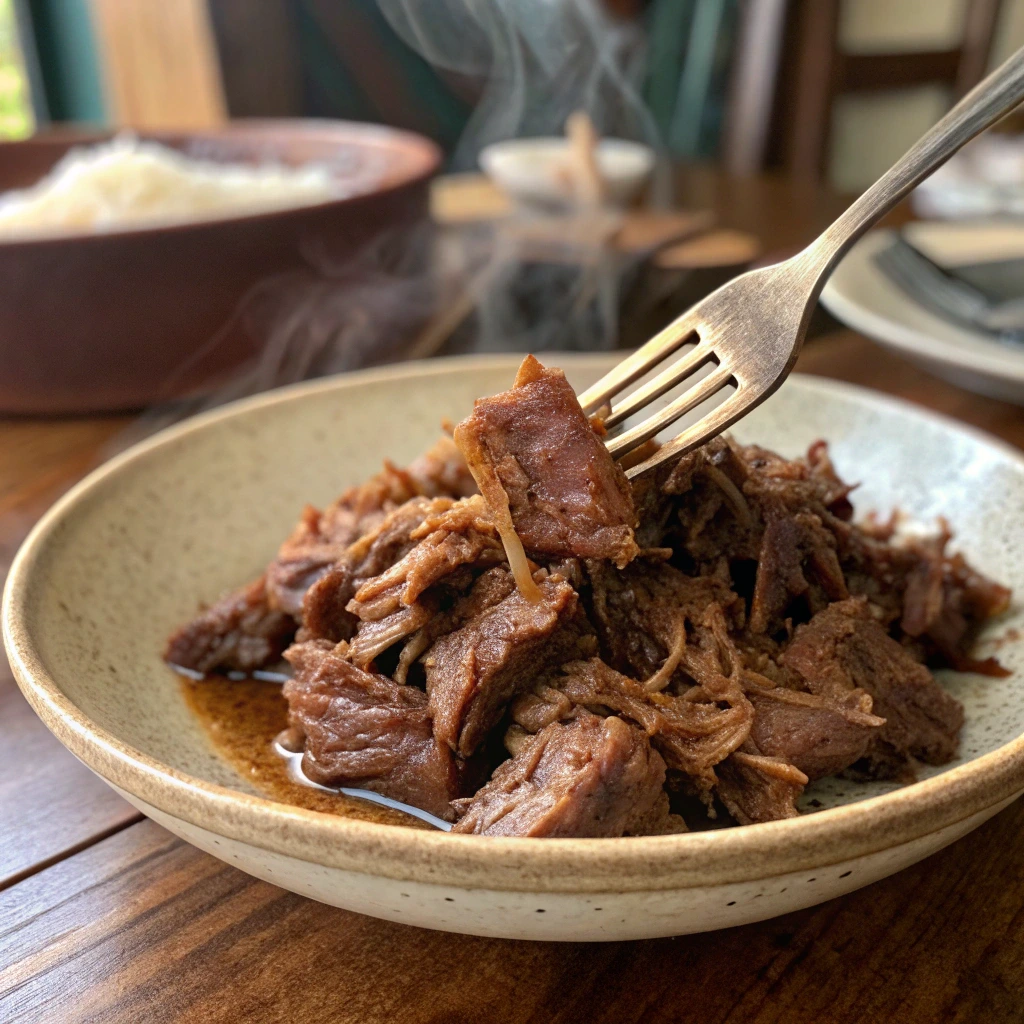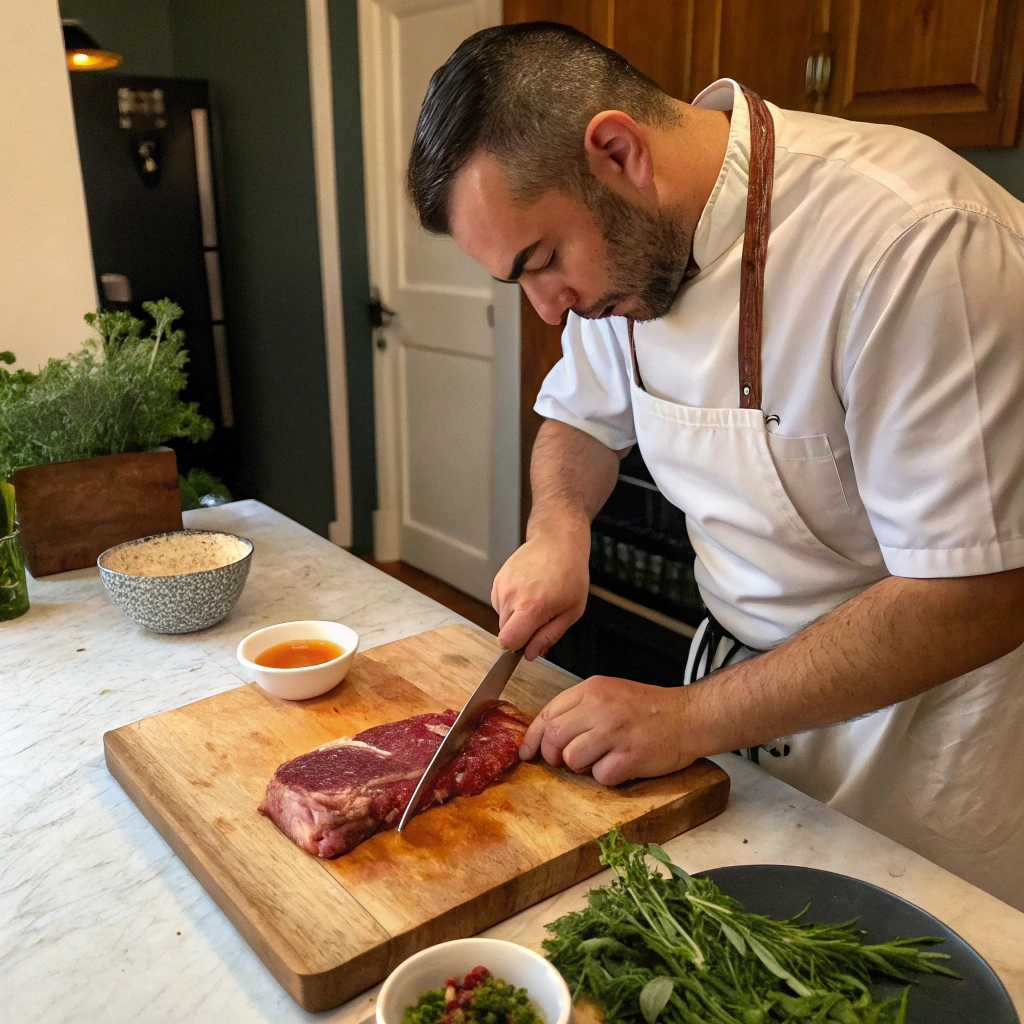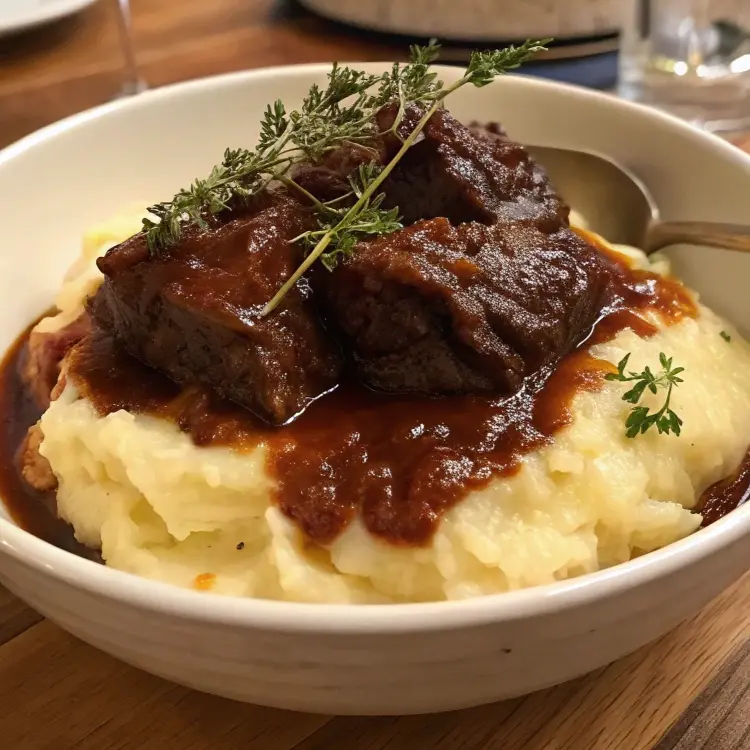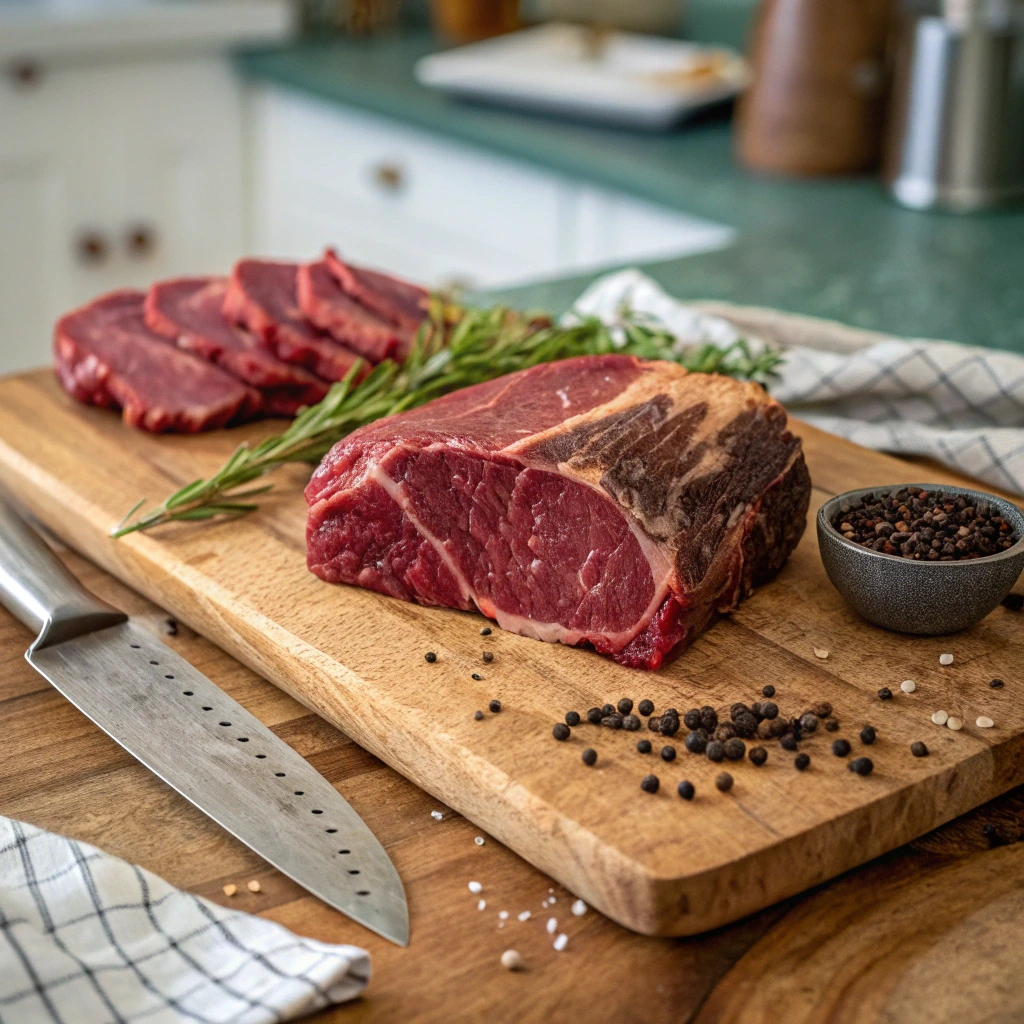Beef Cheek Meat stands among the most underrated yet flavorful cuts in the culinary world. While not as commonly used as ribeye or brisket, Beef Cheek Meat delivers an unmatched tenderness when slow-cooked.
From braising in red wine to smoking for a barbecue twist, this cut can transform simple dinners into mouthwatering feasts.
If you’re keen to stop boring dinners, keep reading as we unveil seven epic secrets to mastering Beef Cheek Meat.
What Is This Cut?
This cut comes from the facial muscles of the cow. These muscles work hard during the animal’s life and contain plenty of connective tissue. When cooked low and slow, the fibers break down into a luxurious, silky texture.
Though it might sound unfamiliar to some home cooks, it has long been treasured in cuisines across the globe—featured in dishes such as Mexican barbacoa or French daube.
The Unique Characteristics of This Cut
- Intense Flavor: Thanks to the constant movement of the cheek muscles, this meat offers a robust, beefy profile.
- High Collagen Content: This translates to melt-in-your-mouth tenderness once thoroughly cooked.
- Versatile Applications: From tacos to gourmet stews, it adapts easily to different dishes.

Why It’s Considered a Delicacy in Many Cuisines
Chefs and foodies adore this meat for its rich, unctuous consistency. Whether marinated with spices or simmered in fragrant broths, it emerges succulent.
Such depth of flavor makes it a staple in upscale restaurants and home kitchens looking for that wow factor.
How It Differs from Other Beef Cuts
While short ribs or brisket might also be slow-cooking favorites, this cut has an edge in gel-like tenderness and uniform muscle structure.
Short ribs include bone, while brisket can sometimes dry out if not cooked properly. The cheeks remain moist and flavorful, thanks to their collagen density.
The Flavor & Texture of Beef Cheek Meat
Cooking enthusiasts rave about Beef Cheek Meat for its high connective tissue, which melts into gelatin when exposed to heat over time. The result is a velvety bite with layers of flavor.
If you love succulent meats that shred easily under a fork, this cut belongs on your grocery list.
What Makes Cheeks So Tender and Flavorful
- Steady Collagen Breakdown: Slow heat transforms tough fibers into luscious, melt-in-your-mouth bites.
- Natural Marbling: Even if not as fatty as some cuts, the intermuscular tissue ensures moisture.
- Adaptable to Bold Seasonings: The depth of flavor welcomes everything from red wine and herbs to spicy peppers.
Why Slow Cooking Brings Out the Best in This Cut
The best results come from patience. Braising or smoking at low heat for hours allows the collagen to dissolve, making Beef Cheek Meat fork-tender.
Quick-cooking methods risk toughness, as the connective tissue won’t have time to break down.
How to Source & Buy Quality Beef Cheek Meat
With Beef Cheek Meat gaining popularity, more butcher shops and even well-stocked grocery stores now carry it. Alternatively, you can order online from specialty meat suppliers.
Where to Buy Cheeks (Butcher, Grocery Store, Online)
- Local Butcher: You’ll often find fresh or custom-cut options.
- Supermarket Meat Counter: Larger stores might carry vacuum-sealed cheeks.
- Online Retailers: Ideal if you can’t locate them locally or desire specialty grass-fed options.
What to Look For in High-Quality Beef Cheek Meat
- Color: Aim for a bright, deep red.
- Firmness: It should feel solid, not mushy.
- Minimal Odor: Fresh meat has no off smell.
Grass-Fed vs. Grain-Fed Beef Cheek Meat
- Grass-Fed: Leaner, with a more intense, mineral-rich flavor.
- Grain-Fed: Tends to have slightly more marbling and a smoother, buttery taste.
How to Prepare This Cut for Cooking
Trimming and Cleaning
If any excess silver skin or heavy connective tissue is visible, trim it with a sharp knife. However, don’t remove all the fat—some is essential for flavor. The mild sinew left behind will dissolve during cooking.
Marinating for Maximum Flavor
A robust marinade can enhance the meat even further. Options include red wine with herbs, chipotle peppers for a smoky twist, or a simple soy-ginger mixture for Asian flair. Aim to marinate for at least 4 hours, or overnight if possible.
Cooking Techniques for This Cut
Pressure Cooking: A speedy method for tender results in under 2 hours.
Braising: A classic approach using liquids like stock or wine.
Slow Cooking: Ideal for set-and-forget convenience.
Smoking: Imparts a barbecue dimension.

The Best Beef Cheek Meat Recipes
Classic Braised Beef Cheeks
Ingredients:
- 2 lbs beef cheek meat
- 2 tbsp olive oil
- 1 onion, chopped
- 2 garlic cloves, minced
- 2 cups red wine
- 2 cups beef stock
- Sprigs of thyme, salt, and pepper
Instructions:
- Brown beef cheek meat in hot oil. Set aside.
- Sauté onions, garlic; add wine and stock.
- Return cheeks, cover, then braise at 325°F (160°C) ~3 hours.
- Serve atop mashed potatoes or polenta.

Mexican Barbacoa-Style Beef Cheeks
Inspired by classic barbacoa, slow-cook Beef Cheek Meat with chili peppers, cumin, oregano, and onion. Ideal for tacos, burritos, or a meaty topping over rice.
Smoked Beef Cheeks
Rub with salt, pepper, and maybe paprika. Smoke low and slow at ~225°F (107°C) for 5–6 hours. Mist with a light marinade every so often to keep the surface moist.
Beef Cheek Ragu
Simmer in a tomato-based sauce with onions, carrots, and red wine. Pile it over pasta or gnocchi for an Italian feast. The ragu can cook in a Dutch oven or slow cooker until the meat easily shreds.
Asian-Style Soy-Braised Beef Cheeks
Marinate Beef Cheek Meat in soy sauce, garlic, ginger, and a hint of star anise. Braise gently until the sauce reduces to a rich glaze, pairing well with steamed rice or noodles.
Beef Cheek Meat vs. Other Cuts: What’s the Difference?
| Cut | Texture & Flavor | Best Method | Fat Content |
|---|---|---|---|
| Beef Cheek Meat | Very tender after slow cooking, deep flavor | Braising, slow cooking, pressure cooking | Moderate |
| Short Ribs | Meaty, can be somewhat chewy | Braising, BBQ | Moderately high |
| Brisket | Firm yet tender when done right | Smoking, long braise | Higher fat |
| Oxtail | Gelatinous, thick sauce base | Slow braising | Higher fat |
Which Cuts Can Be Substituted for Beef Cheeks?
Short ribs, chuck roast, or brisket can stand in, but might not offer the same gelatinous mouthfeel. If you love Beef Cheek Meat for its distinctive texture, you may find other cuts lacking that special consistency.
How Long Does It Take to Cook Beef Cheek Meat?
- Slow Cooker: 6–8 hours on low for succulent shreds.
- Instant Pot: ~60–90 minutes under pressure for fork-tender results.
- Stovetop Braising: Usually 2.5–4 hours, depending on temperature and portion size.
Cooking Time Breakdown for Different Methods
| Method | Cooking Temp | Estimated Time |
|---|---|---|
| Slow Cooker | Low (~200°F) | 6–8 hours |
| Instant Pot | High pressure | ~60–90 minutes |
| Stove Braise | 300–325°F (149–163°C) | 2.5–4 hours |
| Oven Roast/Braise | 300–325°F (149–163°C) | 3–4 hours |
Nutritional Benefits
Protein Content
Beef Cheek Meat is packed with protein essential for muscle maintenance. A typical 3-ounce serving can provide ~20+ grams of protein, depending on cooking method.
Essential Vitamins and Minerals
Rich in iron, zinc, and B vitamins, Beef Cheek Meat supports energy levels and immune function. Collagen from the muscle tissue benefits skin and joint health.
Is Beef Cheek Meat a Healthy Choice?
When cooked properly, Beef Cheek Meat can be part of a balanced diet. Opt for less added fat in cooking and watch portion sizes if you’re mindful of calorie or cholesterol intake.
Common Mistakes When Cooking Beef Cheek Meat (And How to Avoid Them)
Overcooking vs. Undercooking
Beef Cheek Meat demands a sweet spot. Overcooking can turn it mushy, while undercooking leaves it tough. Stick to tried-and-tested times and test a piece for tenderness.
Not Using Enough Liquid When Braising
Because cheeks dry out quickly if not submerged, ensure enough liquid—broth, wine, or sauce—covers at least half the meat. This fosters even heat circulation.
Skipping the Resting Period
Give your Beef Cheek Meat 10–15 minutes to rest after cooking. This helps juices redistribute, ensuring each bite is succulent, not waterlogged or overly dry.
FAQs Section
What does beef cheek meat taste like?
It has a rich, beefy taste with a melt-in-your-mouth texture when slow-cooked.
How do you make beef cheek meat tender?
Low and slow cooking methods—like braising, slow cooking, or pressure cooking—let collagen break down, yielding tender results.
Can you substitute beef cheeks with another cut?
Short ribs, chuck roast, or brisket can stand in, though they lack the same gelatinous quality.
Is beef cheek meat expensive?
It’s often more budget-friendly than high-end cuts like ribeye, but may be pricier than standard stew meat. Prices vary by region.
What’s the best way to store cooked beef cheeks?
Keep leftovers in airtight containers in the fridge for up to 4 days, or freeze for ~3 months.
Can you freeze raw beef cheek meat?
Yes. Wrap tightly, store up to 6 months. Thaw overnight in the fridge before cooking.
Final Thoughts: Why Beef Cheek Meat Deserves a Spot in Your Kitchen
Beef Cheek Meat merges an unparalleled richness with a tender, almost velvety bite. Its ability to stand up to bold flavors—whether braised in wine or simmered in spicy sauces—makes it a hidden gem for adventurous home cooks.
Try it in barbacoa tacos, a hearty stew, or a luxurious ragu. Once you master this succulent cut, it’s easy to see why Beef Cheek Meat deserves a permanent place in your culinary lineup. For a refreshing complement to these rich dishes, explore our cranberry tea recipes.
Enjoy exploring its many possibilities and watch your dinner guests rave about the tasty results!

